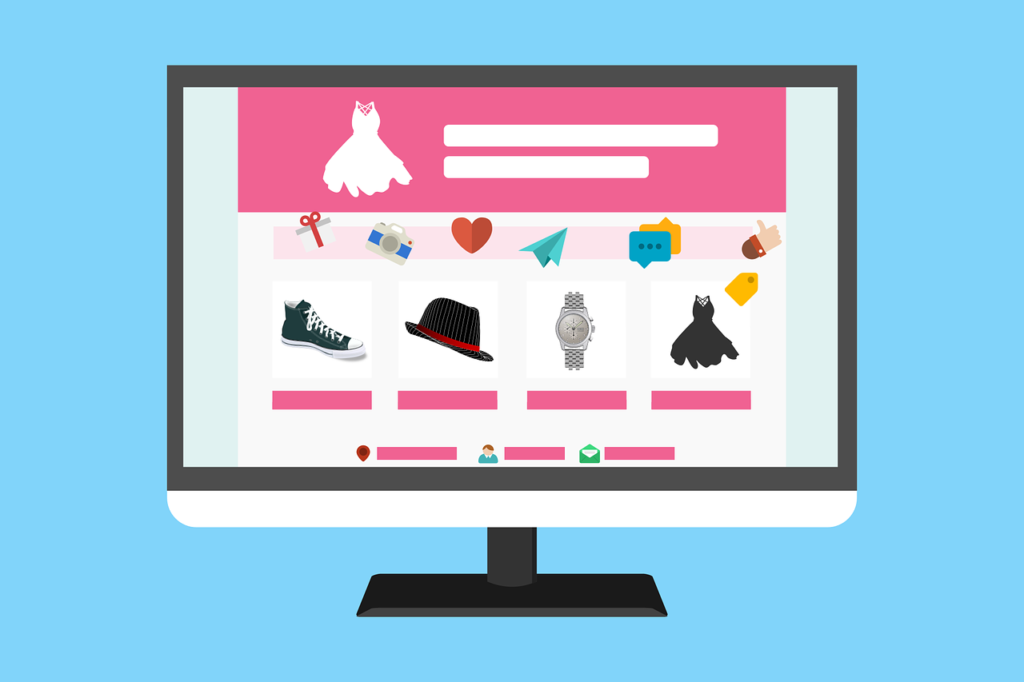Good design is crucial for e-commerce websites as it translates to better user experience and improved conversion rates. First impressions matter, and in the online world, your website design is often the first contact a customer has with your brand. Additionally, an intuitive, clean layout with easy navigation enhances the shopping experience, making the customer more likely to make a purchase.
The Impact of Design on User Experience
When it comes to e-commerce, creating a positive user experience is critical. A well-designed website will not only be aesthetically pleasing but will also be easy and intuitive to use. User Experience (UX) design can greatly influence the user journey on your website, from browsing to checkout. Thus, it can improve user satisfaction, customer loyalty, and repeat business.
Remember, design is more than just the look. It involves the entire shopping experience, including how easily visitors can navigate your site, how quickly they can find what they’re looking for, and how smooth the checkout process is. So, always put your users first when designing an e-commerce site.

1. Create a User-Friendly Navigation and Layout
When designing an online store, the navigation and layout can play a significant role in customer retention. A user-friendly navigation makes it easy for shoppers to find what they’re looking for and interact with your site. Creating an intuitive navigation menu for your e-commerce site can improve user experience and boost sales. Here are a few tips:
- Make Your Navigation Menu Clear and Concise: Overloading your menu with too many options can confuse shoppers. Stick to essential categories and subcategories.
- Use Familiar Terms: Stick to commonly used terms in your menu to avoid confusing your customers.
- Consider Dropdown Menus: Dropdown menus can help categorize items effectively without cluttering your layout.
2. Optimize Website Layout for Easy Shopping
The layout of your online store needs to be visually appealing and easy to navigate at the same time. Implementing these practices can make your e-commerce website more user-friendly and potentially increase your sales conversion rate:
- Have a Clean and Organized Layout: Overly busy layouts can distract customers and make shopping complicated. Stick to a simple, clean design.
- Keep Important Information in ‘Prime Real Estate’: Places like the top of the page or center-screen are where customers look first. Ensure you place critical information like product categories, sales, and important announcements there.
3. Ensure Mobile Responsiveness
In 2023, Mobile Responsiveness is not just an additional feature; it’s a necessity. Most consumers use their smartphones to shop, and thus, making an e-commerce website mobile-responsive can significantly impact your online store.
Mobile-friendly design drastically improves user experience, aiding in navigating and viewing products easier on smaller screens. Not only that, Google also prioritizes mobile-friendly websites in search results, affecting your online visibility and SEO ranking. So, here are some best practices for a mobile-optimized e-commerce website design:
- Simple Navigation: A simplified and easy-to-use navigation menu enhances user experience at the core.
- Large Buttons: Larger buttons are easier for users to click on small screens.
- Fast-Loading Pages: Speed is of the essence; slow-loading pages can frustrate users and can lead to high bounce rates.

4. Invest in Visual Appeal and Product Presentation
One of the crucial elements of creating a successful ecommerce website is its visual appeal and product presentation. The way products are displayed on your website can directly influence customers’ decision making. Let’s break it down into two sub-categories.
Using High-Quality Images and Videos
High-quality images and videos give customers a virtual in-store shopping experience. They can have a clear idea about the product’s appearance, style and texture. Also, having multiple angle shots and 360-degree view videos can give customers a comprehensive understanding of what they are buying.
Effective Product Descriptions and Details
Effective product descriptions and details play a substantial role in conveying critical information about the product. They should highlight the unique selling points, including features, benefits, and specifications. Including accurate details such as size, weight, and materials can help customers gauge the product’s appropriateness for their needs.
5. Provide Clear Call-to-Actions and Checkout Process
Clear and compelling CTAs are indispensable in effective E-commerce website design. They instruct the user on the next step, whether that be “Add to Cart,” “Buy Now,” or “Sign Up for Discounts.” Carefully consider color, placement, and wording to make your CTAs stand out and encourage clicks.
However, the ultimate goal is to make the checkout process as quick and effortless as possible, reducing the likelihood of cart abandonment. Features to consider include guest checkout options, saving user information for future purchases, and easy navigation between cart and store items. Innovation in this sphere leads to an efficient shopping experience, ensuring that once a customer decides to purchase, they can do so effortlessly.
6. Guarantee Fast Load Times and Peak Performance
In the fast-paced digital world, every second count. A slow-loading e-commerce website can lead to a significant decrease in sales and customer satisfaction. Prospective customers are likely to abandon a site that takes too long to load, resulting in lost sales and decreased customer trust. In fact, a 1-second delay in page load time can lead to a 7% loss in conversions.

7. Prioritize Trust and Security
E-Commerce websites should rely on SSL certificates and other security measures to protect user data and transactions. Creating a trusted environment for users not only includes showcasing product quality but also ensuring the website’s security and data protection mechanisms are in place. Remember, a secure website increases the credibility of your online shop which directly impacts the user’s trust and purchase decisions. So, make sure to:
- Obtain and display SSL certificates for secure connections
- Regularly update and backup the website to prevent data loss
- Use trusted payment processing systems to avoid compromised transactions
- Consider two-factor authentication for user accounts to upgrade security
8. Integrate Social Media and Reviews
Integrating social media on your e-commerce website can help generate more traffic and increase sales. Implement social sharing buttons, user-generated content, and live chat options that link to your social media accounts.
Customer reviews serve as social proof, enhancing the credibility of your online store. Consider featuring reviews on product pages and integrating a rating system to increase user trust and engagement.
9. Personalization and Customization
Personalized shopping experiences are no longer a luxury but a necessity in the modern e-commerce landscape. Offering personalized product recommendations, customized content, and tailored promotions can significantly enhance the customer’s shopping journey. With advances in machine learning and data analytics, e-commerce platforms can effectively understand customer behavior and preferences, making shopping more relevant and enjoyable for each individual user. It’s all about making your customers feel understood and valued!
Key Takeaways
By implementing these best practices, your e-commerce website will be well on its way to success, delivering a user-friendly shopping experience that keeps customers coming back for more:
- Keep Your Design Simple and Clean: Overly complex designs can overwhelm users and detract from the main purpose – purchasing products.
- Ease of Navigation is Critical: Make sure users can quickly find what they’re looking for with simple, responsive navigation menus and search bars.
- Excellent Product Visuals are Key: High-resolution images and video can significantly boost sales.







